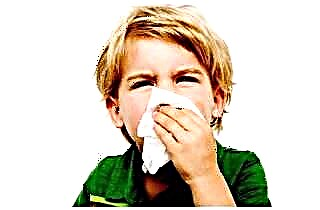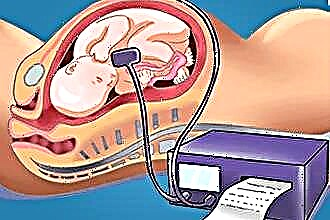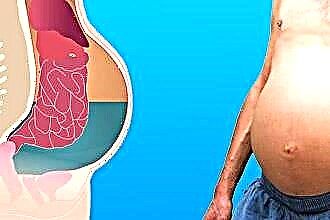Despite the development of medical science and the constant invention of new drugs and treatment methods, heart attack and stroke are still in first place in mortality, including among the working-age population. The reason for this is the constant deterioration of the environment, poor quality food and low physical activity. Understanding the urgency of the problem, I want to tell you what these diseases are from the point of view of a doctor, and also outline the difference between a heart attack and a stroke.
Characteristics of diseases
If blood circulation is disturbed in any organ, then local or widespread tissue necrosis (necrosis) occurs due to the lack or insufficient supply of nutrients and oxygen. This process is called a heart attack. Not everyone knows that this pathology affects not only the heart muscle, but also other organs (brain, lung, kidney, intestines). But only changes in the myocardium occur quickly and require urgent hospitalization.
Stroke is an acute process of cerebrovascular accident, which is accompanied by typical neurological symptoms. He can be:
- Ischemic. It occurs in a certain area due to the overlap of the lumen of the vessel. By origin, it is divided into thromboembolic, hemodynamic and lacunar. Its second name is cerebral infarction.
- Hemorrhagic. It appears as a result of a violation of the integrity of the vessel wall with the subsequent release of blood into the tissue.
A heart attack is a broad concept; it can affect many organs. A stroke has several types and causes of occurrence, but only the brain suffers.
Similarities and differences
Acute vascular disorders have common causes. Most often, the problem occurs as a result of:
- thrombosis;
- embolism;
- atherosclerosis;
- hypertension;
- diabetes;
- systemic diseases with vascular lesions.
Development factors: obesity, abuse of fatty foods, stress, bad habits and physical overload. The development of a stroke can also provoke anemia, hemodynamic disturbances, intoxication, skull trauma, thinning of the vascular wall.
The main similarities and differences in symptoms and methods of emergency care in case of impaired blood flow in vital organs can be graphically presented in the form of a table:
Myocardial infarction | Stroke | |
Signs | Pain behind the sternum radiating under the left shoulder blade, in the arm or lower jaw, rhythm disturbance, pressure surges, shortness of breath, weakness, panic attack and fear of death. | Numbness of the body, loss of control, paresis and paralysis, impaired vision, hearing, swallowing, coordination. Nausea and vomiting, no relief, severe headache, lethargy. |
Basic research for diagnosis | Blood biochemistry with definitions of necrosis markers, ECG, EchoCG. | Coagulogram, CT or MRI of the brain, encephalography, lumbar puncture |
First aid | Give "Nitroglycerin", "Validol", "Corvalol", "Aspirin". Place or put in a bed with a high headboard. | Place on a horizontal surface, in case of loss of consciousness, turn your head to one side. Drugs should not be given. |
Possible complications | Rhythm and conduction disturbances, aneurysm, heart failure, heart rupture, cardiogenic shock. | Persistent or transient paresis (or paralysis), decreased intellectual ability, memory loss, coma. |
Prevention methods for both diseases do not differ much. It is recommended to walk in the fresh air, monitor your weight, follow a diet, exercise daily at a moderate pace and without overload. It is also important to constantly monitor blood pressure, sugar levels, take blood thinners and statins in order to normalize cholesterol levels.
Expert advice
I draw your attention to the fact that when providing first aid, it is very important to recognize the pathology in time. The patient's further life depends on the correctness of the actions of the person nearby.
- With a heart attack, there is severe pain in the region of the heart. She can give from the left to the hand, under the scapula, in the jaw and the entire half of the head, stomach. Atypical forms are manifested in the form of rhythm disturbances (the pulse becomes frequent and uneven), pronounced abdominal discomfort or shortness of breath similar to an asthma attack.
- A stroke is accompanied by impaired consciousness, unsteadiness of gait, severe pain in the head. If you ask the patient to raise his hand, then most often he will not be able to do this. When you try to smile or stick your tongue out, you will notice a bias to one side. This symptom allows you to fairly accurately determine this acute condition. For brain damage, speech impairment, nausea and vomiting, and uneven pupil dilation are also typical.
What is more dangerous for humans
The likelihood of complications and death is high in both cases. But the incidence and survival rate depend on gender. A heart attack with damage to the heart muscle in middle age is more common in men, after 50 years this difference is smoothed out.
The fact is that in a young woman, a high level of estrogen protects her from the development of atherosclerosis, and during menopause, the hormonal background changes. The mortality rate due to myocardial necrosis remains higher in the stronger sex. Stroke in women develops less often, but in them it is more often fatal.
It makes no sense to talk about what is more dangerous: a stroke or a heart attack. The prognosis and outcome of each of these diseases depends on many factors:
- age and gender;
- the degree of irreversible damage to organ tissue;
- the presence of concomitant diseases;
- speed and correctness of emergency care.
The probability of death of a patient in the first hours of acute vascular pathology is the same in both cases. But in this sense, my colleagues and I consider a heart attack more dangerous. Myocardial necrosis develops very quickly, and doctors simply do not have time to reach the patient. However, after a stroke, it takes much longer to recover and more often leads to severe disability: the prognosis for the quality of life is less favorable.
Case from practice
A patient was admitted to the hospital with complaints of weakness, severe chest pain and heaviness in the head. At the same time, dizziness, shortness of breath, blueness of the nasolabial triangle, high blood pressure, and increased heart rate were noted. The ECG showed signs of acute myocardial ischemia of the posterior-basal parts of the heart. When taking EEG abnormalities were not found, pathological symptoms from the nervous system are absent. A blood test showed an increase in myoglobin, troponin, ALS and AST, and low-density cholesterol levels.
Diagnosis: Acute large-focal myocardial infarction. Hypertension II degree.
Treatment was carried out (oxygen therapy, intravenous nitrates in a drip, Heparin, beta-blockers, diuretics, sedatives). After 3 weeks of intensive therapy, the condition improved, the dynamics is positive on the cardiogram, and the formation of a scar is noted. Discharged under the supervision of a cardiologist at the place of residence. Recommended secondary prevention of the disease, constant intake of "Aspirin", "Nitroglycerin" when pain occurs, "Bisoprolol", "Atorvastatin" for life, a diet with limited fatty foods.



